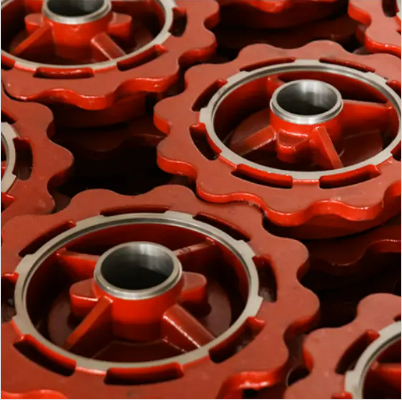Mobile:+86-311-808-126-83
Email:info@ydcastings.com
Understanding the Costs Associated with Aluminum Die Casting for Manufacturing Applications
Understanding the Cost of Aluminum Die Casting
Aluminum die casting is an advanced manufacturing process widely used for producing complex metal parts with high precision and excellent surface finish. This method involves forcing molten aluminum into a mold under high pressure, which solidifies quickly, resulting in the final product that is ready for use or further processing. While the advantages of aluminum die casting are well recognized—such as lightweight components, corrosion resistance, and dimensional accuracy—the cost of producing these cast parts can vary significantly based on several factors.
1. Material Costs
The primary cost driver in aluminum die casting is the raw material itself—aluminum. The price of aluminum can fluctuate based on market conditions, global supply and demand, and geopolitical factors. Other elements, often added to aluminum for improving mechanical properties, will also impact the overall material cost. For instance, incorporating higher-grade alloys can enhance strength or machinability but increase the cost. Therefore, choosing the right aluminum alloy that balances performance requirements and cost is crucial for manufacturers.
2. Tooling and Equipment Expenses
Die casting requires specialized tooling, which consists of the molds used to shape the aluminum. The manufacturing of these molds can be quite costly, depending on their complexity and the materials used to create them. High-quality steel molds, which are necessary for high-volume production runs, can represent a significant upfront investment. Additionally, the maintenance of this equipment to ensure longevity and precision adds to the overall cost. Investing in advanced die-casting machinery, such as automated systems, can enhance production efficiency but typically comes with additional capital expenses.
3. Production Volume and Economies of Scale
aluminum die casting cost

The volume of parts being produced plays a vital role in determining the per-unit cost of aluminum die casting. High-volume production often leads to lower per-part costs due to economies of scale. The setup costs associated with die casting processes can be spread over a larger number of parts, thereby reducing the individual cost of each piece. Conversely, lower volume production runs may result in higher per-part costs due to the fixed costs of tooling and setup being allocated to fewer units.
4. Complexity of Design
The complexity of the part being cast is another significant factor influencing the cost. More intricate designs may require additional machining or secondary operations, such as surface finishing, which can add to the overall production costs. Simplifying part designs where possible can lead to reduced costs, as it allows for quicker cycles in production and less intricate tooling. However, it is essential to balance design complexity with functionality to ensure that the final product meets performance requirements without incurring unnecessary expenses.
5. Labor and Overhead Costs
Labor costs associated with die casting primarily involve skilled operators who oversee the casting process and maintain the machinery. In regions where labor costs are high, such as Western countries, this can significantly impact the overall production costs. Additionally, overhead costs related to facilities, utilities, and administrative support contribute to the final cost of die-cast products. Outsourcing die casting to regions with lower labor costs can sometimes provide a cost-effective solution, although it introduces concerns about quality control and lead times.
Conclusion
The cost of aluminum die casting is influenced by a myriad of factors, including raw material prices, tooling expenses, production volume, design complexity, and labor costs. Manufacturers must carefully navigate these elements to optimize their processes and maintain competitiveness in the market. Through thoughtful material selection, strategic design choices, and efficient production methods, companies can manage their die casting costs effectively while delivering high-quality aluminum components that meet market demands. Understanding these cost drivers is essential for making informed decisions in the die casting industry.
-
Why Should You Invest in Superior Pump Castings for Your Equipment?NewsJun.09,2025
-
Unlock Performance Potential with Stainless Impellers and Aluminum End CapsNewsJun.09,2025
-
Revolutionize Your Machinery with Superior Cast Iron and Aluminum ComponentsNewsJun.09,2025
-
Revolutionize Fluid Dynamics with Premium Pump ComponentsNewsJun.09,2025
-
Optimizing Industrial Systems with Essential Valve ComponentsNewsJun.09,2025
-
Elevate Grid Efficiency with High-Precision Power CastingsNewsJun.09,2025











